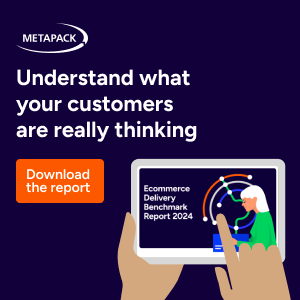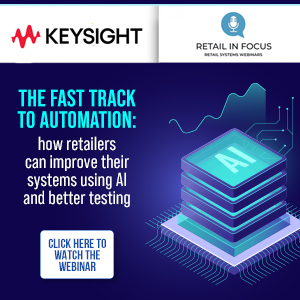Almost half (49 per cent) of all retailers believe they have ‘a comprehensive and accurate view of goods leaving the warehouse to the point of customer delivery’,
according to research commissioned earlier this year by mobile solutions provider M-Netics. But only nine per cent are ‘extremely confident’ that delivery operations are as efficient as they could be, with a further 55 per cent ‘moderately confident’.
“Most retailers would believe they have a good handle on delivery to store,” says Paul Brooks, director at Unipart Logistics and chairman of the Institute of Logistics. “Availability is a key component in a good shopping experience. And if you’re an online business – if only half of them have got a good visibility on delivery, well, I’m not sure what the other half are doing.”
But John Sewell, principal at supply chain consultancy Crimson & Co, believes the results show that many retailers know only too well where their capabilities fall short.
“I think there is a clear difference between the audit type question of ‘are we losing material in the supply chain?’ and the question as to whether they have got their costs right,” he says. “The former is pretty well controlled. On the latter they’re right to be dissatisfied.”
The big grocers are at the forefront of supply chain innovation. Colin Smith, logistics systems manager at Sainsbury’s, can point to a number of recent enhancements, including the introduction of a realtime, GPS-equipped transport management solution. “That has significantly improved our transport operation while removing road miles, supporting our corporate responsibility agenda,” he says.
“We have also reviewed our order profiles to reduce lead
time into store, which, along with other initiatives, has seen a significant improvement in availability.”
New realtime warehouse management and personnel performance management solutions have also helped Sainsbury’s drive improvements in logistics, along with the introduction of voice picking. But not many retailers have access to the kind of resources Sainsbury’s can command.
Into the cloud
As these solutions are cloud-based, suppliers can also access them, enabling them to take more responsibility for logistics. Sherry believes clothing retailers are leading the way, although FMCG retailers and suppliers are close behind.
The stumbling block is retailers’ reluctance to give the supplier too much information about what’s happening inside their
businesses. “We’ve been able to introduce a standards-based system that sits in the cloud and allows them to open up relevant data to [suppliers] only,” says Sherry.
“And they can move data from proprietary systems into a standard format suppliers can use.”
But retailers are also still struggling to manage multi-channel
operations. Shoppers can now indulge buying behaviours
online that were relatively unusual in telephone-based shopping and unknown in bricks and mortar. Consumers can buy the
same item of clothing in multiple sizes, then send back what doesn’t fit.
That places an extra burden on reverse logistics, complicated still further if customers then have a choice of sending the goods back to the warehouse, or returning them via a local store. With budgets under constant pressure it’s little wonder some retailers decide to outsource some or all of these processes, taking advantage of the international logistics networks
constructed by outsourcers like Unipart Logistics.
Its clients include Waterstones, ASOS, and Homebase, which Unipart has helped to pursue a strategic reduction of inventory by £20 million per year to improve cashflow.
It has operated Homebase’s National Import Centre at Cowley in Oxford since 2006, applying lean methodologies to cut waste from operational processes as the centre has grown from 160,000 square feet to 440,000 square feet. It now distributes more than 2,500 SKUs; almost 40 per cent of the goods on the shelves at Homebase.
“The main thing they’ve brought to the party is constant innovation and their ability to undertake value stream mapping,” says Nigel Basey, head of distribution at Homebase. “They’ve helped to drive cost out and improve service while maintaining and improving the service they offer.”
Logistics outsourcers are also likely to make more use of
cloud technology and software as a service (SaaS) in future, with the ‘pay as you go’ model particularly appealing for retailers operating under ever-tightening budgets. Vendors are also
developing solutions for smaller retailers, like Imtech’s LBASE
5 Smart.
Delivery improvements
But Uniparts’ Brooks isn’t sure that the cloud will be a panacea for logistics management, even if it offers realtime visibility of the supply chain. “In the main, a full realtime system adds little more value than one that is 15 or 20 seconds out of date,” he says. “Within a minute usually is good enough and much cheaper than realtime. But I think cloud and SaaS will help retailers. We’ll see more interesting innovations next year.”
That type of solution could also help retailers make significant efficiency improvements in delivery. Fabrizio Brasca, vice-president of global logistics at JDA, believes the way retailers view transportation has changed in recent years.
“In our customer base over the past five or six years leading organisations have looked beyond it being a cost reduction area to one they can leverage as a differentiator,” he says.
Brasca says the focus for many retailers is inbound transportation; again, that link with the supplier. He also highlights retailers encouraging manufacturers to deliver goods direct to consumers.
“That’s where you really need advanced technology,” he says. “You need the intelligence in the system to look for those
opportunities.”
But retailers might also miss opportunities if they unthinkingly outsource delivery, warns Crimson’s Sewell. “In the past [delivery] was just to stores and it accounted for a relatively small portion of [retailers’] costs, but in the next year or so more and more retail will go online,” he explains.
“I’ve been working with retailers who are effectively giving up on half their stores, because their e-business operations are growing so fast.
“But not enough [retailers] take the time to understand
what they could do differently in delivery in a way that could transform their costs.” After all, he points out, if retailers become more dependent upon logistics and delivery service providers, those companies will be in an increasingly strong
position to dictate terms.
Great expectations
Sewell points to some long-established catalogue and door-to-door retail operations that have maintained high customer satisfaction and loyalty in part through skilful manipulation of expectations, offering incentives for customers to order in bulk, or to wait slightly longer for a cheaper delivery fee.
Online, he thinks more retailers should follow Amazon’s
example of offering delivery at tiered rates for different speeds.
In the end, he says, it comes back to the need for visibility across the supply chain. “[Delivery] needs to be something
[retailers] actively manage month by month,” he says.
“If the best thing to do is to do your own delivery then do that. It’s about introducing creativity, rather than just outsourcing and then complaining when service providers put prices up.”
Other factors that may force retailers to consider logistics
efficiency more carefully range from the purely practical –
volatile fuel prices – to the increasing importance of the
environmental agenda in the minds of consumers and the corporate and social responsibility aspirations of retailers and manufacturers.
Yet there have been enough improvements in the technology over the past 20 years for retailers to make significant, perhaps business-transforming, improvements.
“On the technical side there have been big advances in RF technology, voice picking and telematics,” says Homebase’s Basey.
“Management have been able to get much better data
from systems, allowing them to improve service and reduce costs. From a process perspective, it comes back to the value stream mapping.
“In the last four years I’ve seen our strategic partners really look at reengineering individual processes. Just five years ago this wasn’t the case.”
Sainsbury’s Smith believes there are important attributes of the logistics and distribution processes that retailers can concentrate on in order to help push it closer to best practice. “Take every decision with the customer in mind,” he advises. “An optimised logistics and supply chain operation will achieve industry-leading availability that makes [customers’] lives easier.” Complex it may be, but underneath it all, this stuff really isn’t rocket science.
Latest News
-
Retail sales remain flat as department stores and food take a hit
-
New Look’s ESG targets approved by SBTi
-
UK Amazon workers could form ‘Europe’s first’ recognised union after ruling
-
UK Supermarkets providing misleading product origin information claims Which?
-
Amazon to double sales of ‘Just Walk Out’ tech to third-party retailers
-
bp rolls out body cams to combat crime
The Very Group
Smarter merchandise planning across the retail value chain
In this webinar, Matt Hopkins, Head of Retail Solutions, Board, Catherine Tooke, SVP Product & Planning, Sweaty Betty, and Subir Gupta, Managing Principal, Thought Provoking Consulting join Retail Systems Editor Jonathan Easton to discuss the findings of the recent Retail Systems report The Merchandise Planning Challenge: How are retailers harnessing technology to optimise planning and retain customers? and examine the innovations that are improving retail planning.
© 2019 Perspective Publishing Privacy & Cookies















Recent Stories